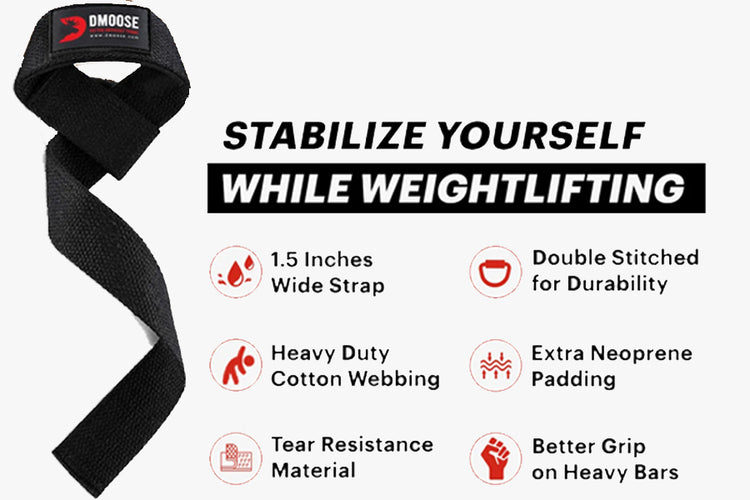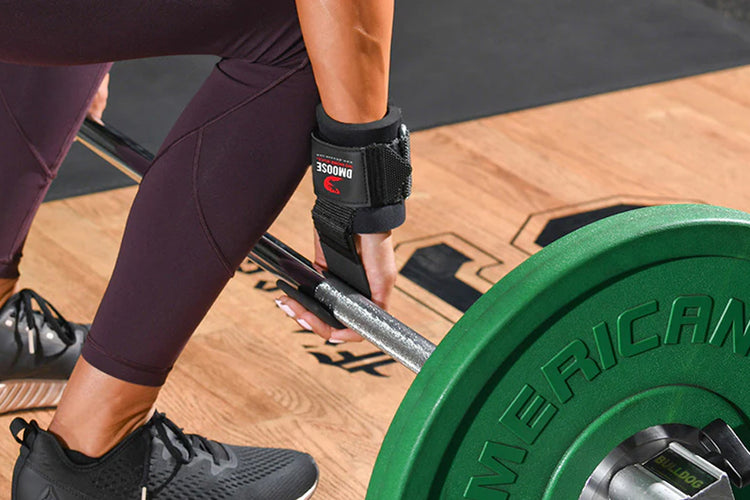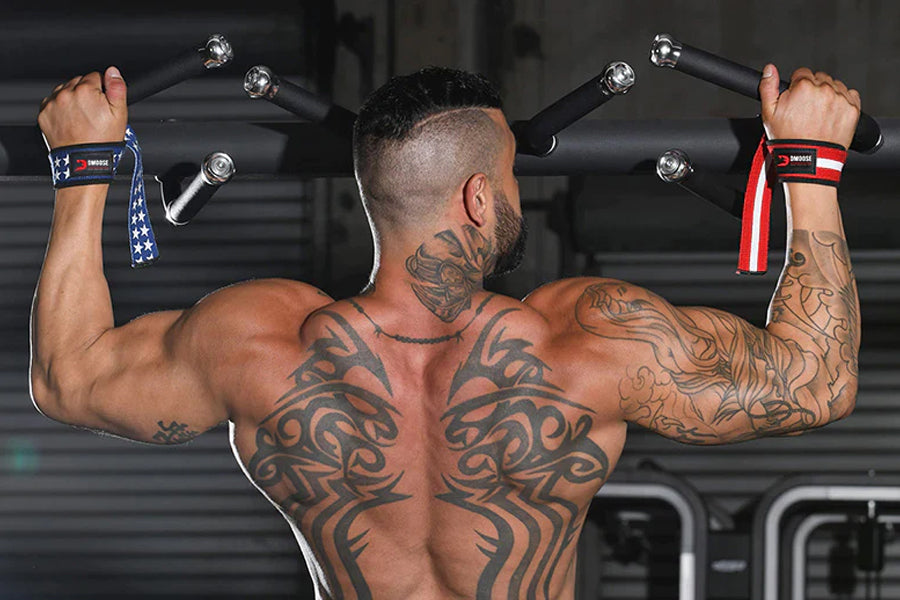Developing calluses on your hands is common when weightlifting or strength training. These thickened areas of skin are the body's natural response to protect itself from friction and pressure.
While some weightlifters wear calluses as a badge of honor, others find them uncomfortable and unsightly. That's where lifting straps come into play.
Lifting straps are a popular accessory among gym-goers, but do they prevent calluses? In this article, we'll explore the causes of calluses while lifting, the effectiveness of lifting straps in preventing them, and guide on using them correctly.
One of the most famous quotes about using weightlifting straps is attributed to renowned strength coach Bob Gajda, a former 1981 Mr. America and 1983 Mr. World Professional Bodybuilding Champion:
"Lifting straps not only helps you handle more weight but also they help improve your grip, which will eventually lead to greater muscle gains over time."
Related Article: A Complete Guide to Using Lifting Straps
What Causes Calluses While Lifting?

Calluses are thickened areas of the skin that develop due to repeated friction, pressure, or irritation. Calluses commonly form due to various factors when lifting weights or engaging in strength training exercises.
Let's explore the causes of calluses while lifting, understand why they occur, and how to prevent them.
Gripping Technique
One of the primary causes of calluses while lifting is an improper gripping technique. When you hold weights or weightlifting equipment, the friction between your hands and the handles can lead to the development of calluses.
If you grip the equipment too tightly or use an incorrect hand position, it can create excess friction, putting pressure on specific areas of the skin and causing calluses to form.
To prevent calluses caused by improper gripping technique, ensure you use the correct hand placement and grip strength. Consider using weightlifting gloves or lifting straps to minimize direct friction on your hands.
Barbell and Dumbbell Handling
Another common cause of calluses during lifting is the rough handling of barbells and dumbbells. These weights often have knurled or textured surfaces that provide a better grip. However, these rough surfaces can also contribute to callus formation, especially when lifting heavier weights or performing exercises that involve prolonged contact with the equipment.
You can use Weight Lifting Gloves by DMoose or apply grip-enhancing products such as chalk or grip pads to minimize barbell and dumbbell handling calluses.
DMoose weight lifting gloves are designed to reinforce your bar grip strength during weightlifting and powerlifting exercises.
These gloves improve control and stability, allowing you to maintain a secure grip on deadlifts, shrugs, and barbell movements, enhancing your overall form and performance.
Excessive Repetition
Repetitive lifting motions without adequate rest or variation can lead to the development of calluses.
When you perform the same exercises repeatedly, the friction and pressure on specific areas of the hands or fingers increase, causing the skin to thicken and form calluses.
To avoid calluses due to excessive repetition, incorporate rest days into your training routine and vary your exercises. This will allow your skin to recover and prevent prolonged friction in specific areas.
Lack of Hand Care
Neglecting proper hand care can also contribute to callus formation during lifting. Dry and rough skin is more prone to developing calluses, as it lacks the necessary moisture and elasticity to withstand friction and pressure.
Regularly moisturize your hands with good-quality lotion or hand cream to maintain healthy hands and reduce callus formation. Exfoliating your hands with a gentle scrub can also help remove dead skin cells and promote smoother, more resilient skin.
How Lifting Straps Prevent Calluses
Lifting straps are popular accessories weightlifters and strength trainers use to enhance their grip and support during heavy lifting exercises. In addition to providing a secure grip, lifting straps also serve as a preventive measure against calluses.
Let's explore the various reasons why lifting straps help prevent callus formation.
Reduced Friction and Pressure
One of the primary ways lifting straps prevents calluses is by reducing friction and pressure on the hands. Lifting straps wrap around the barbell or dumbbell handle, creating a material layer between your skin and the weight.
This barrier minimizes direct contact between your hands and the rough or textured surface of the equipment, significantly reducing the friction that leads to calluses.
By distributing the pressure more evenly across the strap and your wrist, lifting straps also help alleviate excessive pressure on specific areas of the hands, further reducing the likelihood of callus formation.
Enhanced Grip
Lifting straps are designed to provide an enhanced grip on weights, particularly when your grip strength may be compromised due to fatigue or other factors. A secure grip is crucial during lifting exercises to ensure proper form and prevent the weight from slipping out of your hands.
When your grip on the weight is weak or compromised, you may tend to overcompensate by gripping the equipment tighter, leading to increased friction and callus formation.
Lifting straps help maintain a firm and secure grip on the weights, reducing the need to grip tightly. This reduces the friction and pressure on your hands, minimizing the risk of calluses.
Support for Hand and Wrist Positioning
Proper hand and wrist positioning are essential for maintaining a safe and effective lifting technique. DMoose Lifting straps support your hands and wrists, allowing you to maintain a more neutral and aligned position while lifting heavy weights.
This support reduces the strain on your hands and helps distribute the pressure evenly across your grip, decreasing the likelihood of calluses forming in specific areas.
By promoting a more natural and aligned hand and wrist position, lifting straps also help prevent excessive rubbing or sliding of the weights against your skin, minimizing the friction that leads to callus formation.
Increased Training, Volume and Intensity
Lifting straps can enable weightlifters to increase their training volume and intensity without subjecting their hands to excessive stress and friction. Calluses often develop due to repeated friction and pressure, especially during high-volume or high-intensity lifting sessions.
Using lifting straps, you can maintain a strong grip and handle heavier weights more comfortably, allowing you to perform more repetitions or increase the load on specific exercises.
This increased capacity to handle heavier weights with reduced friction helps prevent excessive callus formation.
Can You Use Lifting Straps for All Exercises That Cause Calluses?

While lifting straps are a valuable tool for reducing callus formation, they may only be suitable for some exercises. Lifting straps are particularly beneficial for pulling movements, such as deadlifts, rows, and pull-ups, where a secure grip is essential.
They can significantly enhance your performance and allow you to lift heavier weights by reducing hand fatigue and improving your grip. However, lifting straps may not be necessary or practical for exercises that require precise control and balance, such as squats or bench presses. These exercises heavily rely on stability and proper hand positioning.
Using lifting straps in these instances may compromise your technique and increase the risk of injury. It's essential to assess the specific exercise and determine whether lifting straps are appropriate or if alternatives, such as lifting gloves, may be more suitable.
Using Lifting Straps Correctly to Prevent Calluses
To maximize the benefits of lifting straps and minimize callus formation, it's crucial to use them correctly. Here are some tips to help you use lifting straps effectively:
Choose the Right Type of Lifting Straps
Different lifting straps, including figure-eight, hook, and loop straps, are available. Each type has advantages and disadvantages, so choosing one that suits your needs and preferences is essential.
Position the Lifting Straps Correctly
Before lifting, make sure the lifting straps are appropriately positioned around your wrists. Adjust them to provide a secure fit without cutting off circulation or causing discomfort.
As you become more comfortable and proficient with lifting straps, gradually increase the weight and intensity of your workouts. This will allow your body to adapt and strengthen over time.
Maintain Proper Hand Placement
While using lifting straps, it's essential to maintain a correct hand position on the bar or weight. Don't rely solely on the straps for support; use your grip strength. This will help you maintain stability and control during the exercise.
Is There Any Benefit of Having Calluses?
Although calluses are often seen as an inconvenience, they serve a weightlifting purpose. Calluses provide a protective barrier between your skin and the equipment, reducing the risk of blisters and tears.
Additionally, calluses can improve grip strength by increasing friction between your hands and the weights. However, excessive callus formation can become problematic, leading to discomfort and potential skin damage.
Using lifting straps can help strike a balance between protecting your hands and maintaining optimal performance.
Related Article: How to Use Lifting Straps to Level Up Your Strength Training?
Best Type of Lifting Straps to Prevent Calluses

Choosing the right type of lifting straps can make a significant difference in preventing calluses. Some popular options include:
Figure-Eight Straps
Figure-eight lifting straps get their name from their shape, resembling "8". These straps are made of durable materials such as nylon or cotton. They are designed to wrap around your wrists and the bar or weight you lift.
The advantage of figure-eight straps is that they provide excellent stability and security. They create a tight and secure connection by looping the straps around your wrists and the bar.
This helps to enhance your grip and prevent the bar from slipping during heavy lifts. Figure-eight straps are particularly useful for exercises like deadlifts, where a firm grip is essential.
Hook Straps

Hook lifting straps have a metal or plastic hook at one end instead of a loop or wrap. These hooks are designed to attach directly to the bar, removing the need to wrap the straps around your wrists. Hook straps are typically made of sturdy materials like nylon or leather.
The advantage of hook straps is their convenience and ease of use. With a simple hook-and-loop mechanism, you can quickly secure the straps to the bar.
Hook straps provide a reliable grip and can be helpful when performing pulling exercises like rows or pull-ups. They benefit individuals with limited grip strength or those recovering from hand or wrist injuries.
Loop Straps
Loop or traditional lifting straps are the simplest and most common type. They consist of a single strap with a loop at one end. You slide your hand through the loop and wrap the strap around the bar or weight to use loop straps.
Loop straps are easy to use and suitable for various exercises. They provide a secure grip and can help distribute the weight across your wrists and forearms, reducing strain on your hands. Loop straps are handy for moderate loads or exercises like shrugs or lat pulldowns.
It's important to note that the choice of lifting straps depends on personal preference, comfort, and the specific exercises you plan to perform. Some weightlifters may prefer the added security of figure-eight or hook straps for heavy lifts, while others may find the simplicity of loop straps sufficient for their needs.
Experimenting with different types of lifting straps can help you find the one that suits your grip and lifting style best.
Takeaway
Lifting straps can be an effective tool in preventing calluses during weightlifting. By reducing the friction and pressure on your hands, lifting straps distribute the load more evenly, minimizing the formation of calluses.
However, it's essential to use lifting straps correctly and consider their suitability for different exercises. While lifting straps is beneficial for pulling movements, exercises that require precision and balance may not be suitable.
By finding the correct type of lifting straps and incorporating them into your routine appropriately, you can enjoy the benefits of callus prevention without compromising your performance. Remember, the goal is to balance, protect your hands and maintain optimal grip and technique.














